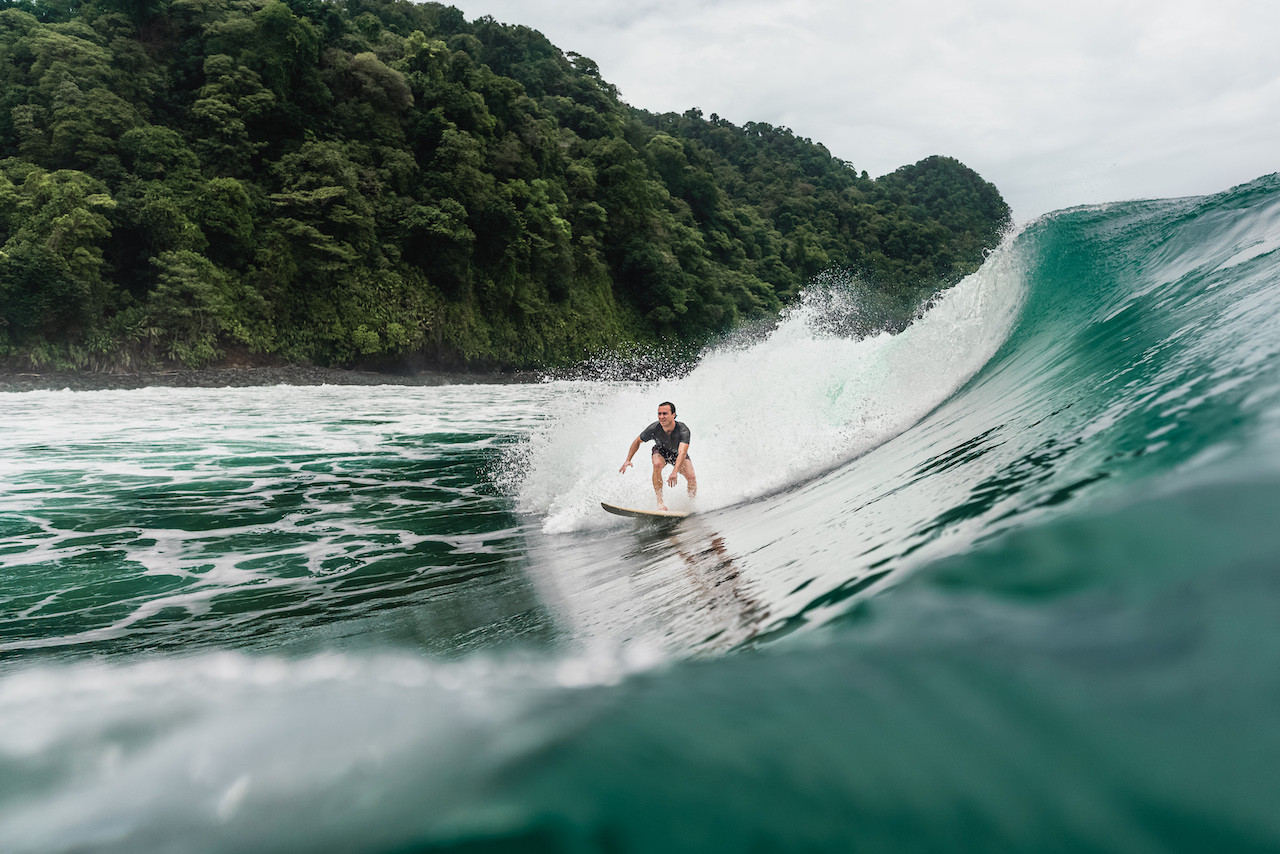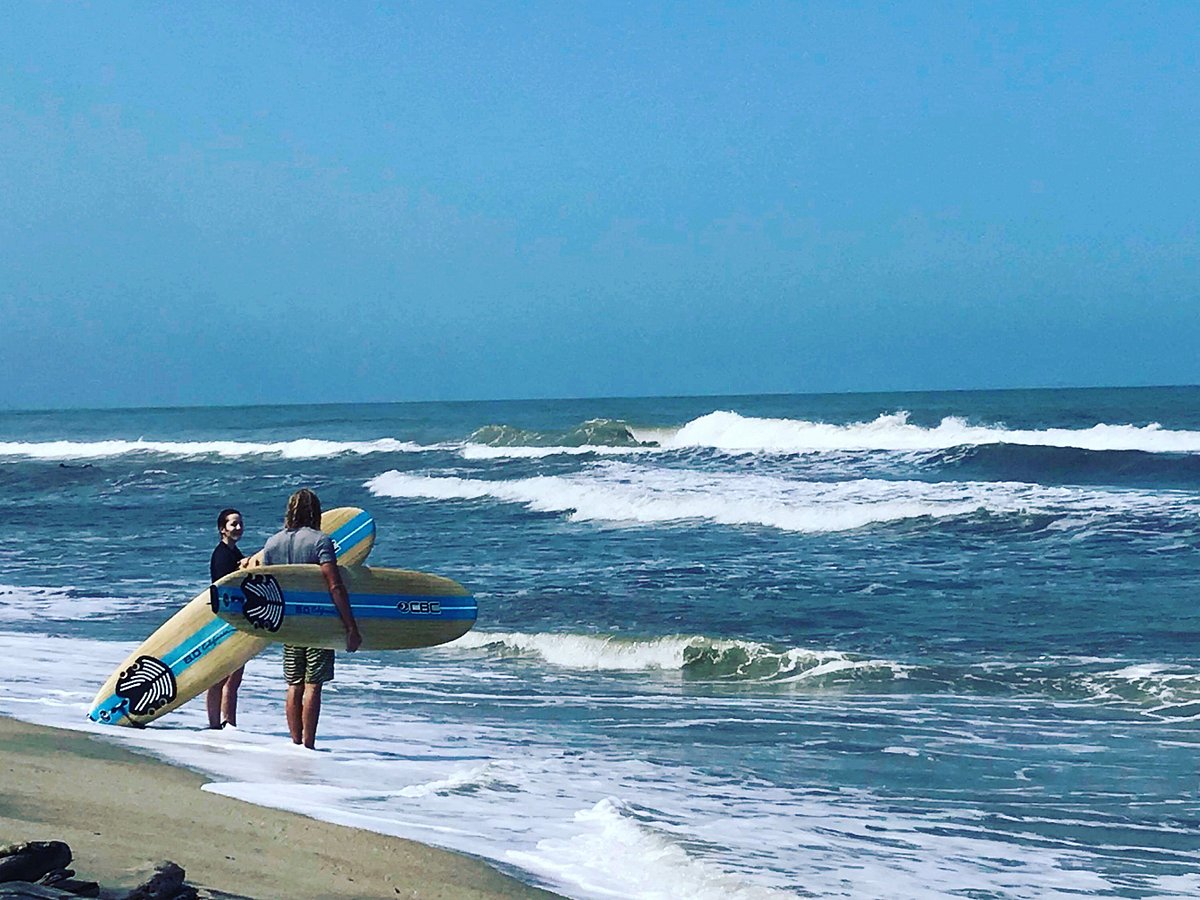Surfing In Nuquí
Nestled along Colombia’s Pacific Coast, Nuquí emerges as a concealed gem, uniting ebony-hued beaches, lush tropical jungles, and an extraordinary array of biodiversity. Secluded and remote, this destination is a haven for surf enthusiasts in search of formidable waves and nature admirers alike. Additionally, during specific seasons, Nuquí presents the unique chance to witness the majestic presence of humpback whales.

The wave season is from April to October. However, the best time to surf in Nuquí is from May to August when the best waves accompanied by winds appear.
Surfing at Playa Terquito
Location: Located to the southwest of Nuquí.
Difficulty: Moderate. The waves here are gentle, and there are no strong winds.
Playa Terquito is a beach with dark sand, embraced by lush jungle surroundings. Known for its cold waters and serene waves, this spot offers a tranquil surfing experience. An extraordinary bonus occurs from July to October when humpback whales frequent these waters for birthing, providing a truly remarkable sight! That would certainly be an epic experience.
Surfing at Playa Pico de Loro
Location: Situated a swift 40-minute boat ride from Nuquí’s coastal area.
Difficulty: Intermediate. The waves here are robust and occasionally reach considerable heights. This destination is optimal for those with prior surfing experience or those aspiring to attain a professional skill level. You need to be an experienced surfer for this location. Don’t fuck around with the ocean if you are not ready it.

Pico de Loro Beach stands out as the preferred locale for both Colombian and international professional surfers, thanks to its isolated and formidable waves. This beach not only serves as a gathering point for surfers but also offers instructional classes.
Santa Marta
Located on Colombia’s northern coast, Santa Marta is a city that seamlessly merges natural splendor with rich history. Boasting golden sandy beaches along the Caribbean Sea, the majestic presence of the Sierra Nevada de Santa Marta—the world’s highest coastal mountain—and the enchanting proximity of the Lost City, this region promises boundless experiences. Furthermore, Santa Marta is emerging as a burgeoning destination for surfing enthusiasts.

The best time to surf in Santa Marta is from January to March when wave intensity is at its peak.
There are a number of surf schools located in the area as well.
Cartagena
Situated on the Caribbean coast of Colombia, Cartagena stands as a historical jewel and a heavily frequented tourist destination within the country. This walled city, honored as a UNESCO World Heritage site, beckons visitors to journey through time with its cobblestone streets, picturesque squares, and colonial architecture. Moreover, owing to its expansive beaches, Cartagena provides enticing opportunities for surfing.
Safety Tips For Surfing in Colombia
Here are some guidelines for a smooth surfing experience in Colombia, minimizing potential setbacks:
- Time Your Trip: Research the best time to surf in Colombia as wave and sea conditions vary. Optimal seasons are December to March on the Caribbean Coast and April to December on the Pacific Coast. Check specific sites using resources like Surf Forecast.
- Pack Wisely: Bring the appropriate surf gear, including boards, wetsuits, and essential accessories. Beginners should research and acquire the necessary equipment.
- Respect Local Rules: Follow local surfing regulations and adhere to surf culture norms. Avoid entering restricted areas, refrain from complex maneuvers if inexperienced, and exercise caution when releasing your surfboard to prevent accidents.
- Understand Water Conditions: Familiarize yourself with local water conditions, currents, and weather forecasts. Learn how to read waves and currents, ensuring proper positioning in the water for the best surfing experience.
- Environmental Stewardship: Contribute to ecosystem preservation by picking up trash, avoiding damage to coral reefs or marine life, and refraining from disturbing local fauna. Embrace sustainable tourism practices to support beach and ocean conservation.
- Explore Diversity: Colombia offers a range of surf destinations. Explore different beaches to appreciate the diversity of waves and landscapes the country has to offer.
- Secure Belongings: Protect your belongings on the beach by not leaving valuables unattended. Utilize lockers if available to ensure the safety of your possessions outside the water.
Surfing in Colombia FAQ
Have you gone surfing in Colombia? How was it? Let me know in the comments.









[…] Top 5 Destinations For Surfing In Colombia […]
[…] Top 5 Destinations For Surfing In Colombia […]